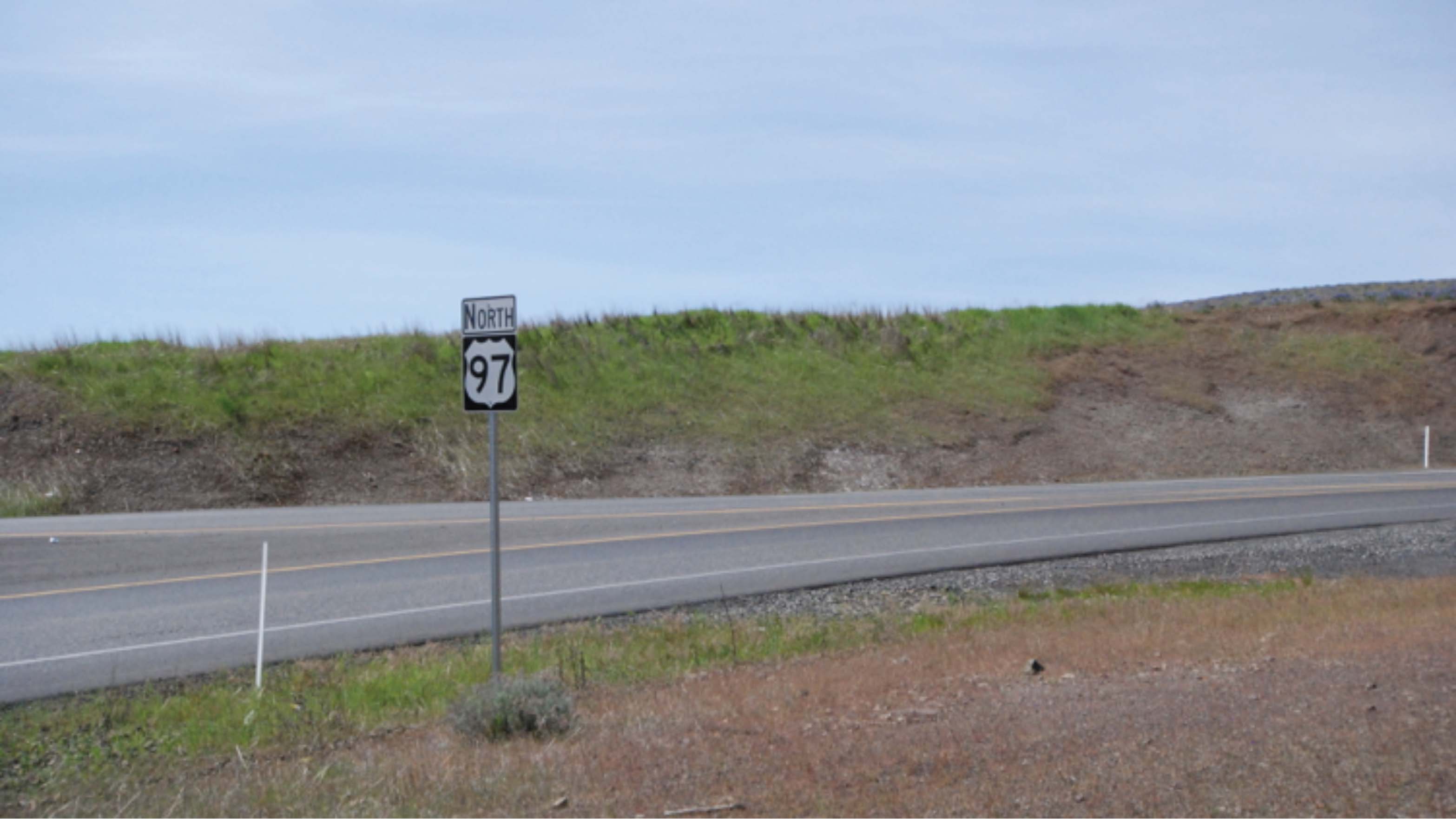ISSUES
• Annual rainfall of only 8” to 12”.
• Arid conditions.
• Low organic content in native soils.
• Severe drought.
PROBLEM
State Department of Transportation Maintenance workers in Goldendale, Washington were faced with a common challenge when restoring vegetation at the interchange between highways 14 and 97: low organic content in the soil and a lack of precipitation. Located in the rain shadow of the Cascade Mountains, the project area receives yearly average rainfall of only 8 to 12 inches. This produces a landscape of open bunch-grass prairies dotted with sagebrush and rabbit brush containing the occasional juniper tree. During the summer months very little precipitation will ever reach the ground resulting in near desert like conditions. Even though the site was situated along the mighty Columbia River, water was in short supply. Any restoration efforts would be complicated by historic low levels of precipitation and compounded by the existing drought facing the region at the time of installation.
SOLUTION
With no hydroseeding experience, the local maintenance crews checked out a hydroseeder from the state fleet and proceeded to install an application of Biotic Earth from ECB Verdyol. This specific product was chosen to both increase the organic material and provide the microbes necessary for the long term nutrient cycling processes that will keep the desired species healthy for years to come; all while also building the soil in the rhizosphere. The crew, inexperienced in any hydraulic application of material, was able to mix and apply the fertilizer, seed and the Biotic Earth in one tank load thus allowing for an easy one step installation process that reduced the risk of possible installation error.
Within sight of the Columbia River it seems strange to have so little water available for both the vegetation and the hydraulic application but the water necessary for the installation was trucked in from the nearest WSDOT maintenance facility to keep the hydroseeder running. With a sufficient amount of rainfall in the late fall the grasses got a strong start on the restoration effort.


RESULTS
The next summer was extremely dry as the entire region suffered one of the most severe droughts in history. The peat moss based Biotic Earth provided improved moisture retention and helped to prevent the evaporation of what little water was available; it even capitalized on the ambient dew of the early morning to keep the grasses alive in the arid conditions. In the following year, while some desiccation was evident, the vegetation continued to provide successful erosion control. Underground, the Biotic Earth continues to build the soil to support the long term stabilization in an area. With the incorporation of Biotic Earth into the design, the site is secure from potential erosion that could mar the area’s beautiful, if stark and severe,
natural landscape.




